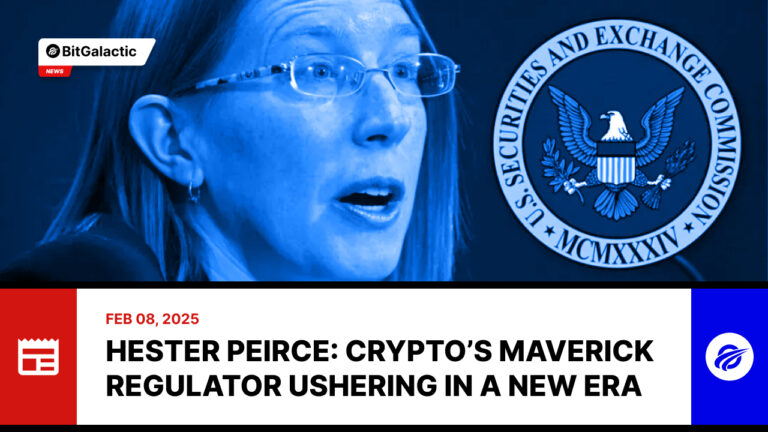Hester Peirce: Crypto’s Maverick Regulator Ushering in a New Era.
In the ever-evolving landscape of cryptocurrency regulation, one figure has consistently stood out—Hester Peirce. A commissioner at the U.S. Securities and Exchange Commission (SEC), Peirce has earned a rare distinction: a regulator embraced by the crypto community. Her unwavering support for free markets and digital assets has made her a beacon of hope for the industry, earning her the affectionate moniker “Crypto Mom.”
The Unconventional Regulator
Peirce’s latest appointment as the head of the Trump administration’s Crypto Task Force signals a bold new chapter for the industry. Unlike many regulators who take a heavy-handed approach, Peirce champions innovation and individual decision-making. “Too often, we as regulators jump in and say, I’m going to tell you what to do with your life,” Peirce told DL News last year. “I’m not your mom.”
Her legal career spans over two decades, beginning with a Yale Law School degree and followed by roles at the U.S. Court of Federal Claims and private practice at WilmerHale. Peirce’s journey took her to the SEC in 2000, where she worked in the Division of Investment Management and later as a key advisor to Commissioner Paul Atkins. Her regulatory influence continued as a senior counsel for the Senate Committee on Banking, Housing, and Urban Affairs before she transitioned into academia at George Mason University.
Although initially nominated by President Barack Obama in 2015, Peirce’s confirmation as SEC Commissioner only materialized under President Donald Trump in 2017. Since then, her tenure has been marked by a firm commitment to market freedom, often clashing with the agency’s more restrictive stance under Chair Gary Gensler. With her term set to conclude in June, many in the crypto space wonder what’s next for Peirce—and whether her legacy will lead to a more balanced regulatory approach.
Championing Crypto Freedom: Safe Harbor and Beyond
Peirce’s advocacy for cryptocurrencies crystalized in 2021 with her Safe Harbor 2.0 proposal. Modeled after legal protections for platforms like YouTube, the initiative sought to provide regulatory clarity for token launches, giving developers time to decentralize their projects without fear of SEC crackdowns. Though the proposal gained traction within the industry, it failed to gain institutional support beyond Peirce’s own GitHub page.
Her frustration with the SEC’s approach has only grown. She has been vocal against the enforcement actions that led to the shuttering of projects like LBRY and Stoner Cats, arguing that the agency’s aggressive stance stifles innovation rather than protects investors. In a recent open letter titled The Journey Begins, Peirce criticized the SEC’s handling of crypto as legally vague and commercially impractical.
BitGalactic echoes her concerns. The crypto industry has long suffered from regulatory ambiguity, where enforcement actions replace clear guidelines. Peirce’s stance aligns with the fundamental principles of decentralization—empowering individuals rather than creating an overreaching regulatory structure.
The Future of Crypto Regulation: A Turning Point?
Peirce’s influence extends beyond her time at the SEC. Whether she remains in a regulatory role or transitions into advocacy or academia, her impact on the crypto industry is undeniable. As she recently wrote, “In this country, people generally have a right to make decisions for themselves.”
Her departure could mark a turning point—will the SEC double down on enforcement, or will a new wave of regulators adopt her vision of fostering innovation? BitGalactic believes that the future of crypto regulation hinges on striking the right balance between protecting investors and allowing technological progress to flourish.
For now, Peirce’s legacy serves as a reminder that regulation doesn’t have to mean suppression. It can be a guiding force that ensures both security and freedom in the ever-expanding world of digital assets. The question remains: who will carry her torch next?
Share this post


